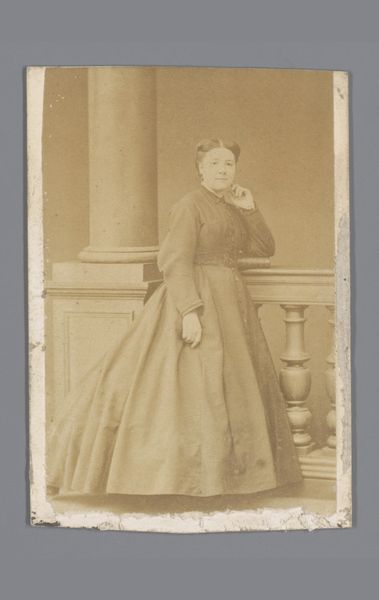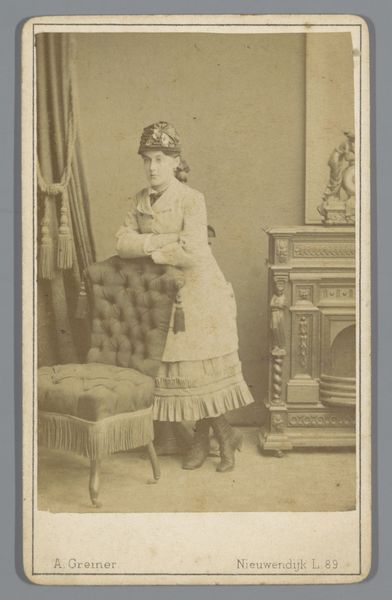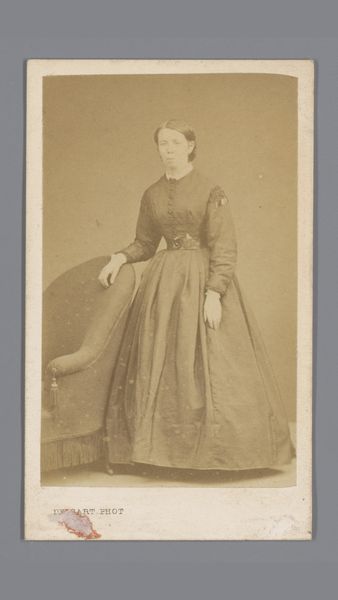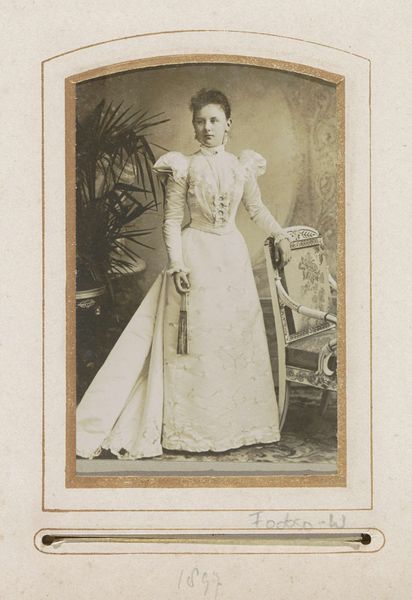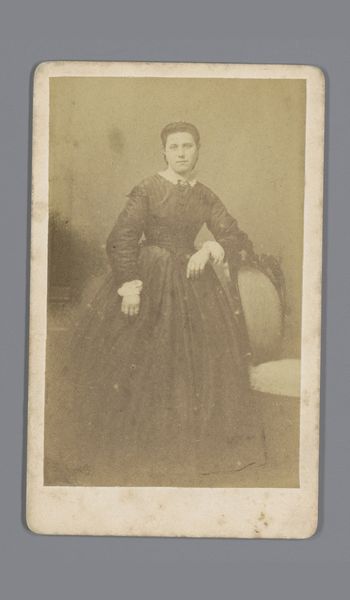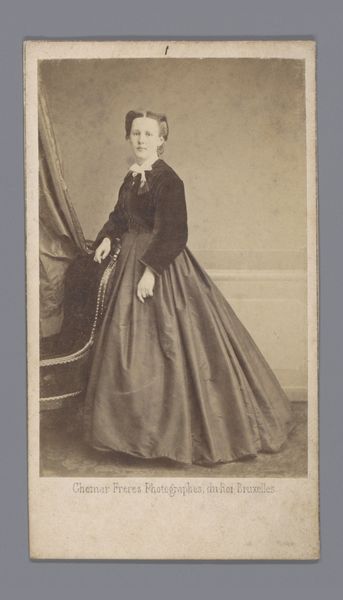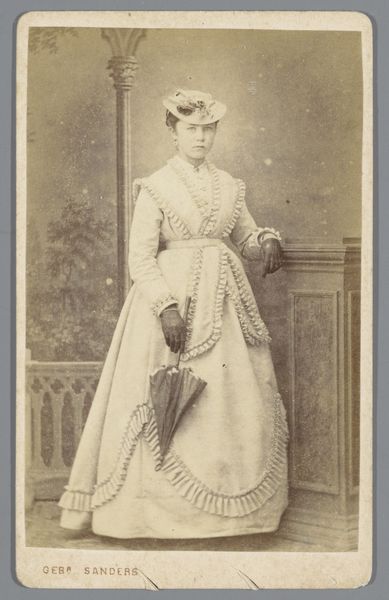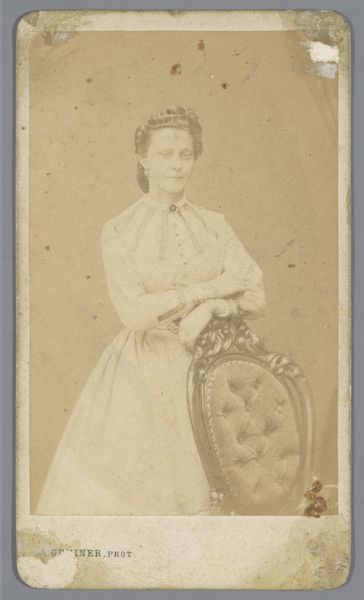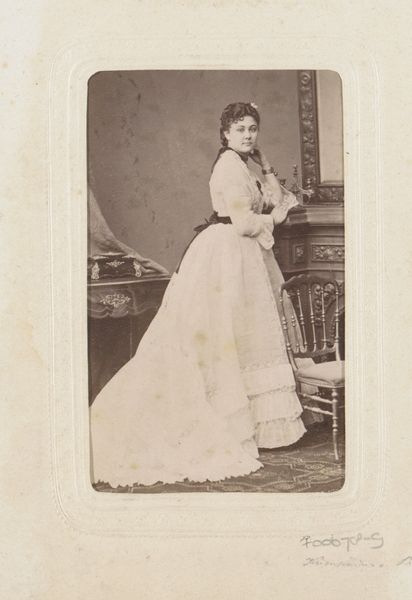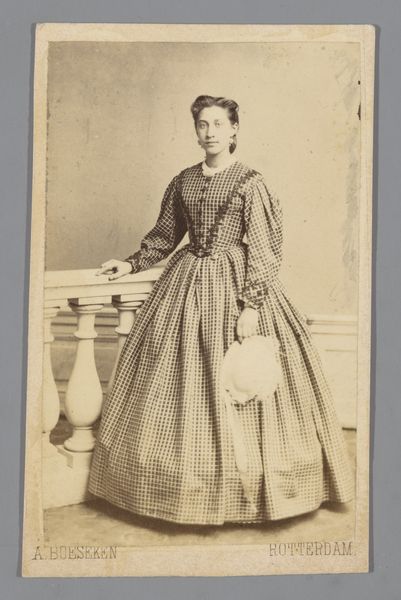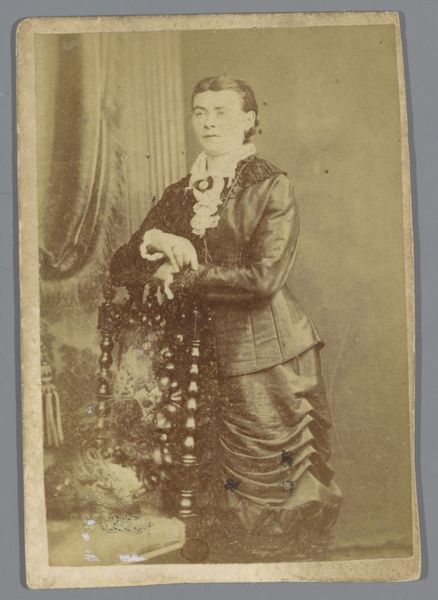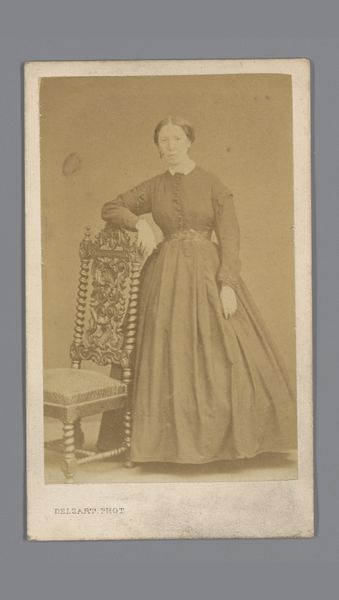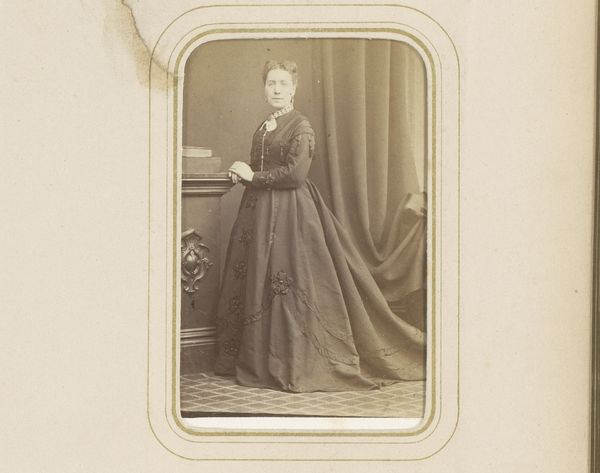
daguerreotype, photography
#
portrait
#
daguerreotype
#
photography
#
genre-painting
Dimensions: height 100 mm, width 60 mm
Copyright: Rijks Museum: Open Domain
Curator: At first glance, this daguerreotype evokes a strong sense of formality, almost severity. The pale tones and the sitter's composed pose...it all feels quite reserved. Editor: Indeed. The work before us is titled "Portret van een onbekende vrouw," dating roughly from 1870 to 1876 and made by the studio of August Diepenbach. The carte-de-visite format speaks to photography’s burgeoning accessibility during that era. Let's consider how the means of photographic reproduction began shifting notions of portraiture. Curator: I'm struck by the details of her dress, especially the delicate ruffles at the hem. One wonders about the fabric, the stitching…it would be interesting to learn where it was produced and by whom. There’s labor embedded in every fold. Editor: Absolutely. Consider the implications of the industrial revolution for women like her, likely upper-middle class. Did the accessibility of fashion empower or further constrict their roles? What performances of identity were permissible in this period? We have to consider the socio-economic fabric interwoven with this portrait. Curator: The neutral backdrop is rather stark, yet there's also an artificial element present with the addition of the balustrade. It highlights the constructed nature of photographic portraiture—the controlled setting to elicit a certain pose. Editor: And notice the studio stamp, "August Diepenbach, Roermond." These kinds of studios helped establish a visual language for disseminating status. What possibilities and constraints did a Roermond studio offer this anonymous woman compared to, say, one in Amsterdam or Paris? Curator: These early photographic formats offered a degree of access not found in painted portraits. Editor: Indeed, the presumed cost of painted portraiture rendered the medium reserved for a privileged class and made photography a tool in democratizing artmaking. It encouraged circulation beyond the elite sphere, though one wonders at the levels of inclusion afforded to different social classes and races. Curator: For me, analyzing the materials of the daguerreotype offers clues into a largely changed production system. Editor: Understanding that helps frame the historical narrative embedded in a relatively simple "Portret van een onbekende vrouw," wouldn't you say?
Comments
No comments
Be the first to comment and join the conversation on the ultimate creative platform.
